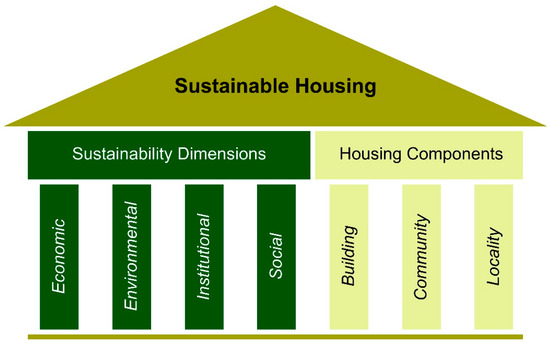Sustainable Development of Affordable Housing – The Buyers Perspective
Introduction
Social housing refers to low-cost and medium-cost housing designed to provide shelter for lower-income groups or those classified under the ‘urban poverty’ category. In Malaysia, this includes Program Perumahan Rakyat (PPR) units and similar schemes, which cater to households earning below RM3,000 per month. These units are typically small, offering one or two bedrooms with a built-up area of approximately 650 square feet. The cost of such housing ranges from RM35,000 to RM60,000, ensuring affordability for those in the lowest income brackets.
Affordable housing, on the other hand, is targeted at the middle-income group, also known as the Median Population. These homes are priced between RM150,000 and RM300,000, with prices reaching up to RM350,000 in prime urban locations. The minimum size requirement for these units is generally 800 square feet (excluding balconies), and they commonly feature three bedrooms to accommodate growing families. This category serves individuals and families earning between RM3,000 and RM10,000 per month.
Challenges Faced by the Middle-Income Group
While the lower-income group benefits from government assistance through social housing programs, the middle-income group often finds itself in a precarious position. They earn too much to qualify for social housing but may struggle to afford private housing without external support. This situation leaves many middle-income earners to navigate the housing market without sufficient financial aid or incentives, placing them under considerable financial strain.
Sustainable Development in Social Housing
One of the critical challenges in social and affordable housing is ensuring that these projects align with sustainable development goals. Sustainable development in housing encompasses environmental, economic, and social sustainability. Housing projects must not only be affordable but also sustainable in the long term, ensuring that they provide quality living conditions while minimizing environmental impact.
Environmental Sustainability in Housing
From an environmental perspective, sustainable social housing requires the use of eco-friendly building materials, energy-efficient designs, and water conservation measures. Many modern affordable housing projects incorporate green technologies such as solar panels, rainwater harvesting systems, and passive cooling techniques. These features help reduce utility costs for residents while decreasing the carbon footprint of housing developments. In tropical climates like Malaysia, proper ventilation, natural lighting, and thermal insulation play crucial roles in maintaining comfortable indoor temperatures without excessive reliance on air conditioning.
Economic Sustainability and Housing Affordability
Economic sustainability in housing involves not only affordability at the point of purchase but also long-term cost-effectiveness. Many social housing units face maintenance and upkeep challenges due to poor initial design and lack of funds for long-term repairs. Sustainable development in this context means ensuring that housing projects are built with durable materials and proper urban planning to prevent the emergence of slum-like conditions. Governments and private developers must consider lifecycle costs, including maintenance and infrastructure support, to ensure that these housing units remain livable for decades.
Social Sustainability and Community Well-Being
Social sustainability focuses on creating housing projects that support community well-being. Affordable housing should not only provide shelter but also foster strong social connections, accessibility to essential services, and economic opportunities. This means integrating housing projects into well-planned urban areas with access to schools, healthcare facilities, public transport, and employment hubs. Many social housing schemes in the past have suffered due to their isolation from city centres, leading to economic stagnation and poor living conditions for residents. Sustainable development requires addressing these issues by ensuring mixed-income neighbourhoods, enhancing public infrastructure, and providing community spaces where residents can interact and thrive.
Financing Models for Sustainable Housing
Governments and developers must also address the issue of financial sustainability in social and affordable housing. Innovative financing models such as rent-to-own schemes, shared equity programs, and housing subsidies can help make homeownership more accessible to middle-income families. Public-private partnerships (PPPs) have also proven to be effective in developing sustainable housing projects, allowing governments to leverage private sector expertise while ensuring affordability for the masses.
Future Outlook for Sustainable Housing
Despite efforts to improve social housing conditions, criticisms persist regarding overcrowding, poor maintenance, and lack of facilities. These issues highlight the importance of sustainable development in housing policies. A holistic approach that includes proper urban planning, quality construction, and integrated community services can lead to long-term improvements. Policymakers must also ensure that social and affordable housing projects do not become isolated ghettos but instead contribute to the overall urban fabric, promoting economic diversity and inclusivity.
Conclusion
Sustainable development in social and affordable housing is not merely a matter of providing shelter—it is about creating resilient communities that can withstand economic and environmental challenges. Governments, developers, and urban planners must collaborate to implement housing strategies that prioritize sustainability, ensuring that the needs of present and future generations are met. By integrating green technologies, ensuring economic viability, and fostering social cohesion, social housing can evolve from a mere necessity to a cornerstone of sustainable urban living.
For further reading:
SUSTAINABLE HOUSING fOr SUSTAINABLE CITIES – UN-Habitat

